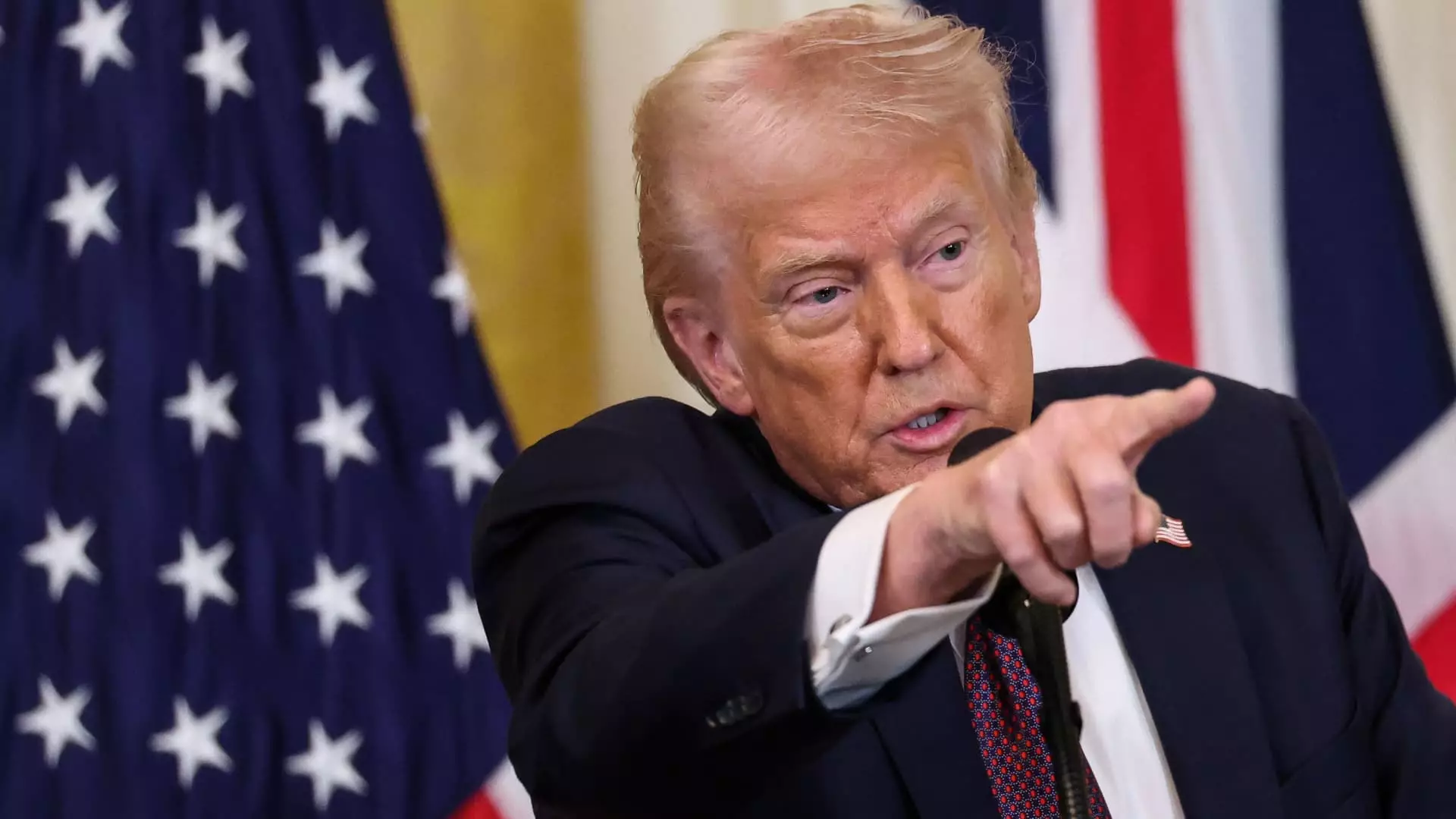In recent years, market dynamics have transformed significantly, prompting investors to re-evaluate their strategies. A notable shift has been the perception of governmental influence on market stability, particularly with the introduction of aggressive fiscal policies. Amidst rising uncertainties, both political and economic landscapes demand critical analysis as markets grapple with potential downturns.
Traditionally, investors have relied heavily on the “Fed put,” a phenomenon where the Federal Reserve acts as a safety net, intervening to prop up the stock market during periods of distress. However, with President Donald Trump’s administration implementing significant fiscal measures, a different kind of economic intervention is emerging—often referred to as the “White House put.” This term captures the notion that governmental action can provide a buffer against deteriorating market conditions.
Market strategist Tom Lee emphasizes that the “White House put” remains an essential component of current economic strategy. According to Lee, the administration’s priority is to prevent the economy from entering a stall speed, a term used to describe a dangerously slow growth rate that elevates recession risks. Increasing public apprehension regarding the administration’s fiscal policies and potential inflation spikes further complicates the scenario, creating a cautionary atmosphere for investors.
Recent Economic Indicators: A Shift Towards Caution
Recent consumer sentiment surveys have shown a rising tide of concern among the populace about economic conditions. While these anxieties are not directly mirrored in market indicators, declining bond yields suggest that investors are increasingly worried about recessionary pressures. The Federal Reserve’s recent data revealed a notable decrease in consumer spending, which has shifted growth forecasts for the first quarter, bringing them to alarming levels.
Lee’s analysis indicates that tariffs—one of the administration’s focal points—might inadvertently suppress growth, leading to a dovish pivot from the Fed. A dovish stance would signal reduced interest rates, a move intended to invigorate economic activity amid sluggish growth. Indeed, the complexities of tariffs could provoke a paradox: the very policies meant to bolster the economy could lead the Fed to become more accommodating in monetary policy.
As investors recalibrate their expectations, reactions to potential economic interventions have become critical. Bank of America’s Michael Hartnett introduced the concept of the “Trump put,” positioning the S&P 500 index at a critical threshold for market interventions. Hartnett posits that the index’s performance at a specific level would trigger demands for verbal or tangible support from policymakers. This situation signifies the growing reliance of the market on governmental rhetoric and action.
There is an inherent tension between the efforts to stimulate the economy and the constraints posed by ongoing trade policies. While the administration’s endeavors to cut regulations and extend tax cuts are steps toward bolstering economic performance, the strategy is fraught with risks. Investors are left navigating a complex landscape where potential gains are often overshadowed by geopolitical uncertainties.
In this volatile environment, the means through which the administration communicates its support become crucial. President Trump’s recent announcements regarding tariffs have ignited investor jitters. As market participants remain on edge, clarity and decisiveness from the administration could be the key to reassuring stakeholders.
While the immediate future appears shaky with looming uncertainties, the market’s adaptability hinges on leadership and government intervention. Policymakers must strike a delicate balance between implementing necessary measures while ensuring that investor confidence does not wane. As the landscape continues to evolve, both fiscal and monetary policies will play vital roles in shaping market trajectories.
Ultimately, the intersection of politics and economics will significantly impact market movements. Investors must stay vigilant and informed, weighing the implications of government actions against potential risks. The era of the “White House put” marks a new chapter in financial strategy, one where understanding political motivations can prove to be as crucial as analyzing economic data. In these uncertain times, adapting to rapid changes will be essential for maintaining a competitive edge in the ever-fluctuating market landscape.


Leave a Reply